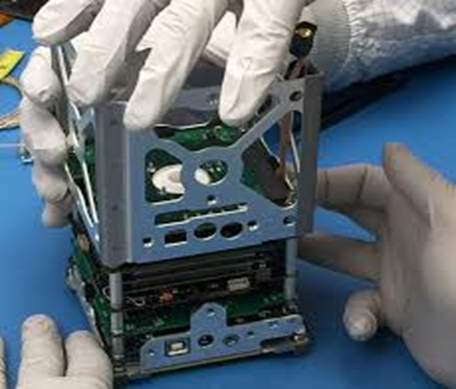- Courses
- GS Full Course 1 Year
- GS Full Course 2 Year
- GS Full Course 3 Year
- GS Full Course Till Selection
- Answer Alpha: Mains 2025 Mentorship
- MEP (Mains Enrichment Programme) Data, Facts
- Essay Target – 150+ Marks
- Online Program
- GS Recorded Course
- Polity
- Geography
- Economy
- Ancient, Medieval and Art & Culture AMAC
- Modern India, Post Independence & World History
- Environment
- Governance
- Science & Technology
- International Relations and Internal Security
- Disaster Management
- Ethics
- NCERT Current Affairs
- Indian Society and Social Issue
- NCERT- Science and Technology
- NCERT - Geography
- NCERT - Ancient History
- NCERT- World History
- NCERT Modern History
- NCERT Medieval History
- CSAT
- 5 LAYERED ARJUNA Mentorship
- Public Administration Optional
- ABOUT US
- OUR TOPPERS
- TEST SERIES
- FREE STUDY MATERIAL
- VIDEOS
- CONTACT US
Introducing the Advanced Composite Solar Sail System (ACS3)
Introducing the Advanced Composite Solar Sail System (ACS3)
27-04-2024
NASA recently launched its Advanced Composite Solar Sail System (ACS3) spacecraft from New Zealand. ACS3 aims to demonstrate solar sail technologies for future deep space missions requiring low-thrust propulsion over extended periods.
About ACS3:
- ACS3 is a NASA technology demonstration mission designed to study solar sail structures for small spacecraft engaging in deep space missions requiring long-term, low-thrust propulsion.
- Launched on April 23, 2024, The complete ACS3 spacecraft measures approximately 9 inches x 9 inches x 13 inches (23 centimeters x 23 centimeters x 34 centimeters), or about the size of a small microwave oven.
- Solar sails use the pressure of sunlight for propulsion, eliminating the need for traditional rocket propellant, much in the same way that sailboats use wind power.
- Previous space missions have demonstrated the effectiveness of solar sails in altering spacecraft orbits, expanding their potential applications.
- Future solar sail missions will require larger sails and lighter materials to optimize performance.
- ACS3 employs lightweight carbon fiber sail booms instead of traditional metal booms, marking the first space test of this technology.
- Solar sailing involves the interaction of photons with a reflective sail. Photons, although massless, carry momentum which is partially transferred upon reflection, giving a slight but constant push to the sail.
- Over time, this slight push could give spacecraft more thrust than conventional chemical rockets.
- Solar sails enable access to unique destinations that may be difficult or impossible to reach with other propulsion systems.
FAQs:
Q1: What are CubeSats?
CubeSats, also known as nanosatellites, are small, square-shaped satellites that are about the size of a Rubik's cube and weigh around 1 kilogram. They are used for a variety of applications, including:
- Education: CubeSats allow university students to develop their own space missions.
- Testing: CubeSats are a fast and cheap way to test new technologies in orbit.
- Space exploration: CubeSats have been used to study near-Earth objects, space weather, and Earth's atmosphere.

CubeSats are categorized by their size, using a unit designation ranging from 1U (one unit) to as large as 16U. A standard 1U CubeSat measures 10x10x10 centimeters, but most nanosatellites are 6U and larger.
Must Check: Best IAS Coaching In Delhi



